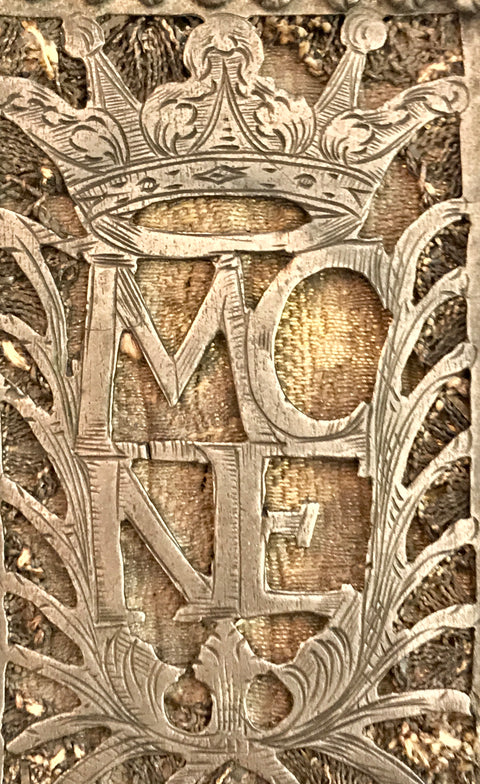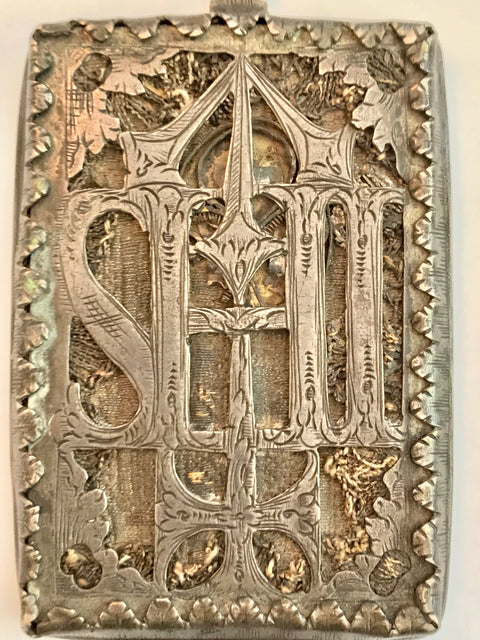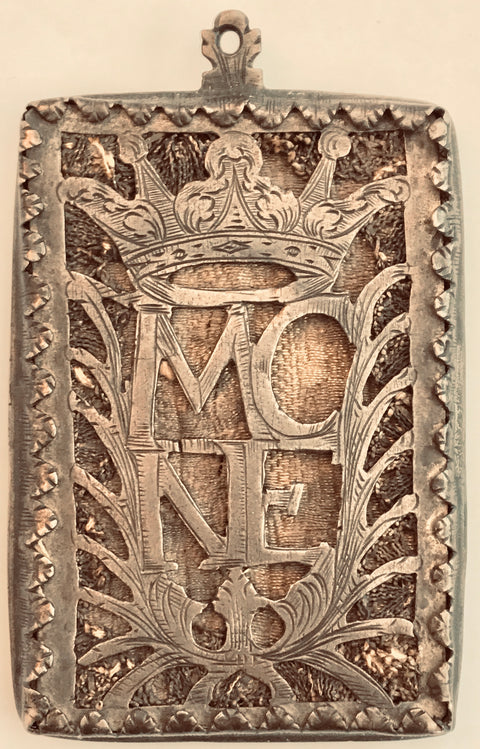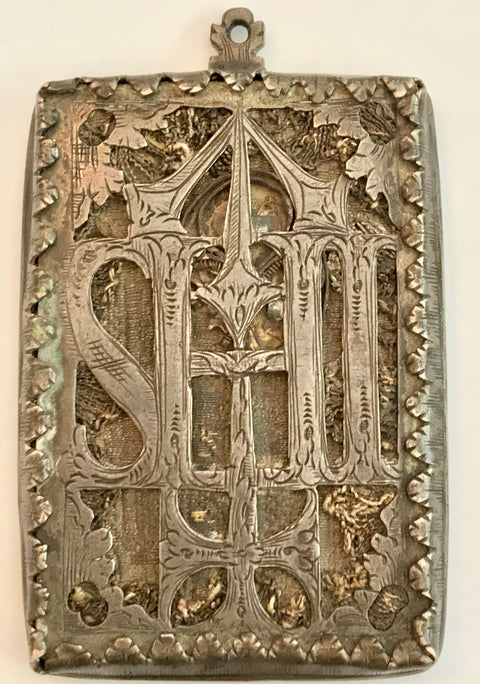





SILVER RELIQUARY PENDANT
Silver Reliquary Pendant, 16th century
Silver,8.8 x 5.8 cm
This reliquary pendant is decorated with the letters IHS, an abbreviation of the Greek form of Jesus Christ, and MCNE surmounted with a crown .
It contains pieces of clothing embroiled with silver or gold.
https://www.gardnermuseum.org/experience/collection/12664
RELIQUARY
A reliquary is a container for relics. These may be the physical remains of saints, such as bones, pieces of clothing, or some object associated with saints or other religious figures. The use of reliquaries became an important part of Christian ritual from at least the 4th century. Relics are venerated in the Oriental Orthodox, Eastern Orthodox, Roman Catholic and some Anglican Churches. Reliquaries provide a means of protecting and displaying relics. They range in size from simple pendants or rings to coffin-like containers, to very elaborate ossuaries. Many were designed with portability in mind, often being exhibited in public or carried in procession on the saint's feast day or on other holy days. Pilgrimages often centered around the veneration of relics. Bust of St. Constance, Genoa 1561 The Catholic Encyclopedia describes a relic as "some object, notably part of the body or clothes, remaining as a memorial of a departed saint".The Catholic Church has developed a method of classification of relics based on their characters. This classification system has its limitations, but overall is an excellent aid in describing these relics. It is divided into three classes, as follows: First Class Relics: Remains of the bodies of saints, for example bones, hair, or blood, as well as the instruments of Our Lord's Passion. Second Class Relics: Articles associated with the lives of the saints, such as clothing, books, and anything else the saints used in life. Third Class Relics: Items, usually small pieces of cloth, which have come into contact with First or Second Class Relics and which are then treated themselves as relics. Among the first third class relics were small pieces of cloth lowered through holes in the altars of churches built over martyr's tombs or placed on the slabs covering them. The earliest reliquaries were essentially boxes, either simply box-shaped or based on an architectural design (e.g. taking the form of a model of a church); these were known as shrines or chasses. Relics of the True Cross became very popular from the 9th century onwards and were housed in magnificent gold and silver cross-shaped reliquaries, decorated with enamels and precious stones. From about the end of the 10th century, reliquaries in the shape of the relics they housed also became popular; hence, for instance, Pope Alexander I's skull was housed in a head-shaped reliquary. Similarly, the bones of saints were often housed in reliquaries that recalled the shape of the original body part, such as an arm or a foot. During the later Middle Ages, the monstrance was introduced—a form of reliquary which housed the relic in a rock crystal or glass capsule mounted on a rod, enabling the relic to be displayed to the faithful. Reliquaries in the form of jewellery also appeared around this time, housing tiny relics such as pieces of the Holy Thorn.